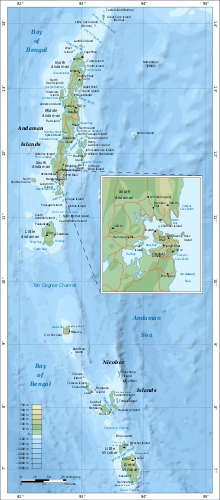DRAINAGE SYSTEM:
- The drainage system refers to system of rivers and its tributaries that belongs to the particular area. These rivers flow and divid then again join each other to make a big stream of water and finally drains into a big water body. These large water body may be anything like a big lake or a sea or an ocean.
- The area drained by the single river system is called as the Drainage Basin.
- The separation between two Drainage Basins refers to the Water Divide.
- The World's largest drainage basin is of the Amazon River.
DRAINAGE SYSTEM OF INDIA:
Indian Drainage system is divided into two broad groups :
- The Himalayan Rivers
- The Peninsular Rivers
purchase your bag here and get ultimate discount
DIFFERENCE BETWEEN RIVER SYSTEMS:
BEST INDIAN GEOGRAPHY BOOK
The Himalayan river system and The Peninsular River system are different from each other in many ways :
- Most of the Himalayan rivers are perennial(Himalayan rivers get water throughout the year.), while a large number of Peninsular rivers are seasonal.
- Himalayan Rivers have two major water sources, that is, rain and melted snow water from lofty mountains., while Peninsular rivers flow is dependent on rainfall. During the Dry season, the large number of Peninsular rivers also get affected in their flow.
- The Peninsular Rivers have shorter and shallower courses as compared to their Himalayan counterparts. However some of them originates from the central highlands and flow towards west. These two rivers are Narmada and Tapti.
- Most of the Rivers of Peninsular India originate in the Western Ghats and flow towards the Bay of Bengal.
1. HIMALAYAN RIVERS:
The Himalayan Rivers are separated in three major river systems:
- The Indus river system
- The Ganga river system
- The Brahmaputra river system
1.THE INDUS RIVER SYSTEM:
- Near Mansarovar lake, in Tibet, the Indus river originates.
- Flowing to the west, it enters in Indian from Ladakh district of J&K state. Indus river forms a picturesque gorge in this part.
- Several tributaries, the Zaskar, the Nubra, the Shyok and the Hunza, join it in the Kashmir region.
- The indus flows through Baltistan and Gilgit and emerges from the mountains at Attock.
- The satluj, the Beas, the Ravi , the Chenab and the jhelum join together to enter the Indus near Mithankot in Pakistan.
- Beyond this, the Indus flows southwards eventually reaching the Arabian sea, east of Karachi.
- The Indus plain has a very gentle slope. with a total length of 2900 km, the Indus is one of the longest rivers of the world.
- A little over the third of Indus basin is located in India in the state of jammu and Kashmir, Himachal Pradesh and the Punjab and the rest is in Pakistan.
***According to the Regulations of the Indus water Treaty which was done in 1960, India can use only 20 % of total water carried by Indus river system. This water is used for irrigation in the Punjab, Haryana and the southern and western part of Rajasthan.
2.THE GANGA RIVER SYSTEM:
- The headwater of the Ganga called the Bhagirathi is fed by the Gangotri glacier and joined by the Alaknanda at Devprayag in Uttarakhand.
- At Haridwar the ganga emerges from the mountains on to the plains.
- The Ganga is joined by many tributaries from the Himalayas, a few of them being major rivers such as the Yamuna, the Ghaghara, the Gandak and the Kosi.
- The Yamuna river rises from the Yamunotri Glacier in the Himalayas.It flows parallel to the Ganga and as a right Bank Tributary, meets the Ganga at Allahabad.
- The Ghaghara, the Gandak and the kosi rise in the Nepal Himalaya. They are the rivers, which flood parts of the northern plains every year, causing widespread damage to life and property but enriching the soil for the extensive agricultural lands.
- The main tributaries, which come from the peninsular uplands, are the Chambal , the Betwa and the Son. These rise from semi arid areas, have shorter courses and do not carry much water in them.






























